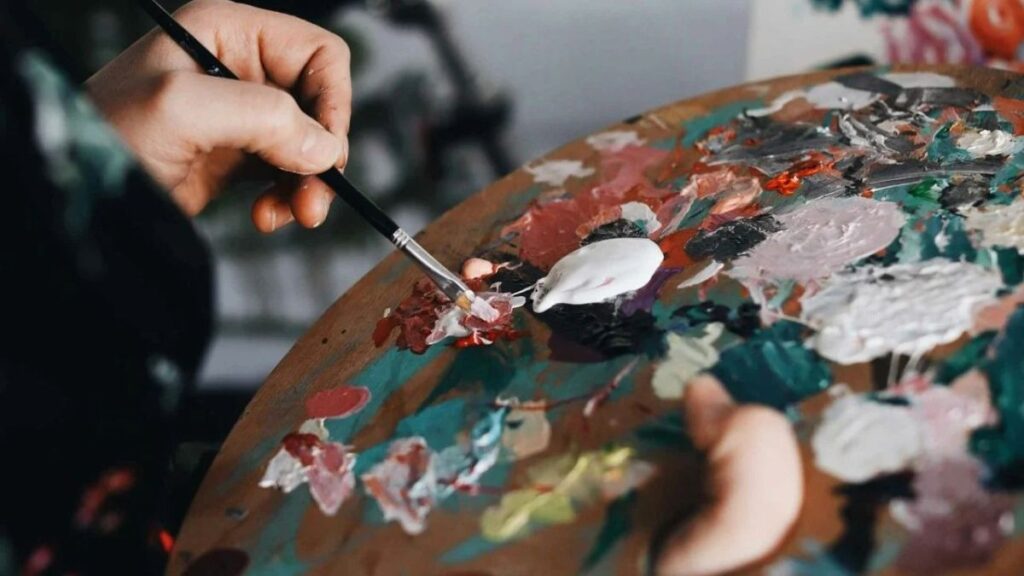In the ever-swelling tide of digital creativity, where artistry often plays second fiddle to algorithmic virality, a new name is beginning to ripple through the surface: artofzio. It’s whispered in niche design forums, tagged beneath explosive visual compositions on Instagram, and embedded in the metadata of eye-catching NFTs. But what is artofzio—a brand, a movement, a mysterious moniker for a creator reshaping the contours of modern art?
This is not just a brushstroke in the vast canvas of contemporary culture. Artofzio is rapidly becoming a multi-dimensional portal into the fusion of digital aesthetic, storytelling, and philosophical inquiry. It’s art for the modern mind, layered with code, critique, and chromatic chaos. Let’s dive in.
A Name That Speaks in Layers
To understand artofzio, you first have to deconstruct the name. There’s an almost ancient cadence to “Zio”—a word that evokes mystique, possibly derived from Italian (zio means “uncle”) or alluding to mythic characters from fantasy fiction. When prefixed with “artof,” it doesn’t just hint at authorship—it screams intention. The art of Zio is not art by accident. It is methodical, evocative, and existentially loud.
But here’s the twist: artofzio isn’t a singular artist in the traditional sense. It is an ecosystem. Think collective intelligence meets solitary genius. Some say it’s the avatar of a digital artist who’s chosen anonymity; others insist it’s an evolving DAO (decentralized autonomous organization) cloaked in poetic branding. Either way, artofzio is part mystery, part movement.
Beyond Aesthetic: The Philosophy Behind Artofzio
Scroll through any artofzio-tagged post and the first thing you’ll notice is an intentional clash of elements. Dreamlike textures overlap with clinical minimalism. Vivid neons are stabbed through grayscale static. But it’s not chaos for chaos’ sake. Every element in artofzio’s repertoire is a study in controlled unpredictability.
The Core Tenet? Disruption with Direction.
Whether it’s a minimalist sketch or a sprawling 3D worldscape, each piece is designed to provoke—not just visually but intellectually. The art challenges perception. Why does the figure lack a face? Why is the color palette jarringly warm for such a cold composition? Why does a looping animation feel like déjà vu? In the world of artofzio, everything has a purpose, even if it isn’t immediately clear.
It’s reminiscent of the Dadaist movement of the 1920s, but layered with post-internet angst and cyberpunk melancholy. If Dada was a rebellion against logic and reason, artofzio rebels against apathy and aesthetic superficiality.
The Medium is the Message—and the Playground
Let’s get technical. Artofzio is not confined to traditional canvases or static exhibitions. Its reach extends across digital domains:
-
Generative Art: Using algorithms and scripts, artofzio crafts pieces that evolve with each viewer. No two interactions are the same, making each encounter deeply personal.
-
Augmented Reality (AR): Through mobile apps and interactive filters, users can experience artofzio in the wild—sculptures in your living room, digital murals on physical walls.
-
NFT Ecosystem: Unlike many NFT creators who capitalize on trend cycles, artofzio releases tokens with narrative value. Each NFT isn’t just a visual—it’s a chapter in a larger digital mythology.
This multi-platform engagement strategy is both modern and magnetic. It doesn’t just invite the audience in—it dares them to participate.
The Cult of the Signature: Decoding the “Z”
A quick note for the eagle-eyed observers: one recurring motif in artofzio’s work is the signature “Z”—not always obvious, but always present. Sometimes it’s embedded in the background code, other times it’s a stark lightning bolt in the middle of a surreal landscape.
The “Z” has come to represent more than just an initial. It’s a sigil. It stands for zero, for Zen, for the zone of liminality between reality and the abstract. It’s branding, sure, but it’s also semiotics—visual shorthand for a deeper ideological core.
In interviews and digital manifestos (yes, there are a few circulating Reddit and Discord threads), the anonymous creator(s) behind artofzio describe the “Z” as “the pivot between chaos and clarity.” Interpret that as you will.
Artofzio and the Algorithm: Social Media as Gallery and Gauntlet
Instagram, X (formerly Twitter), Behance, and TikTok are not merely platforms for artofzio—they’re battlegrounds. Every post competes against kittens, thirst traps, and trending memes. Yet somehow, artofzio manages to pierce through the noise.
How? Through anti-trend strategy.
Instead of leaning into trends, artofzio subverts them. Where others post reels with EDM backtracks, artofzio pairs its animations with ambient drone sounds. While the average caption maxes out with emojis and hashtags, artofzio opts for cryptic phrases—snippets of code, lines of forgotten poetry, or one-word provocations like “reclaim.”
The effect? A scroll-stopping anomaly. Viewers don’t just like or comment—they pause. They think. They Google. They dig. And that’s where the hook sinks in. This is digital marketing not by loudness but by depth.
Who Collects Artofzio?
The collector base for artofzio is as enigmatic as the art itself. It ranges from NFT whales to avant-garde curators to teenage coders who stumbled upon a Discord thread and never left.
Some purchase pieces to display in virtual galleries within the metaverse—yes, that’s still a thing. Others collect artofzio to decode it, like art archaeologists excavating the modern mythos.
And increasingly, artofzio works are entering physical galleries in New York, Berlin, Tokyo—always unannounced pop-ups, often in abandoned or repurposed industrial spaces. The lines stretch long, and the Wi-Fi is weak. But the experience? Unforgettable.
Education as Experience: Artofzio’s Workshops and ThinkLabs
As artofzio gains traction, it’s expanding into educational spaces, but not in the traditional sense. Think less “How to Paint 101” and more “Reality Hacking Through Art & Algorithm.”
Pop-up events dubbed “ZioLabs” have begun surfacing in art schools and creative hubs. Attendees participate in interactive sessions where they co-create pieces with AI, debate the ethics of digital ownership, and explore the thin veil between inspiration and plagiarism in the post-AI art world.
The goal isn’t to teach. It’s to unlearn.
Critics Weigh In: Is Artofzio Revolutionary or Just Noise?
Like all disruptive art, artofzio has its critics.
Traditionalists decry its abstraction as inaccessible. Some NFT skeptics argue that it’s another artist cashing in on the crypto hype. And then there are those who dismiss the entire endeavor as AI-generated fluff dressed up in digital couture.
But even the critics admit one thing: artofzio gets under your skin. It makes you feel something—whether it’s confusion, curiosity, awe, or irritation.
And that, perhaps, is the point.
Artofzio in the Future Tense
Where does artofzio go from here?
There are rumors of a transmedia series in development—part visual novel, part immersive AR app. A few whispers suggest collaborations with fashion labels known for boundary-pushing aesthetics. There’s also speculation about artofzio launching its own blockchain, focused on decentralized creative ownership.
But perhaps the biggest evolution is already in motion: artofzio as a decentralized identity. Not a person. Not even a group. But a cultural node—an idea that anyone can tap into, contribute to, and evolve.
This is more than art. It’s a living archive of digital consciousness.
The Final Stroke: Why Artofzio Matters
In an era defined by rapid consumption and fleeting trends, artofzio dares to ask us to slow down and look. Not swipe, not scroll—see. It’s art that wrestles with meaning in the age of noise, that defies algorithmic conformity, and that invites the viewer to be part of its creation.
So the next time you see the word artofzio, whether etched in the corner of a glitchy masterpiece or buried in a blockchain record, know this:
You’re not just witnessing art.
You’re part of a dialogue—coded, cryptic, and deeply human.






